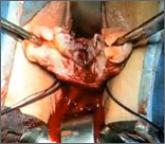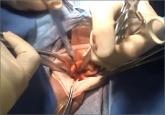From the Editor
Options for reducing the use of open power morcellation of uterine tumors
The most promising alternative to open power morcellation is morcellation in a bag, described here

A sampling of gynecologic surgeons’ views, their institutions’ stances, and individual approaches to patients, gathered at ACOG’s 2014 Annual Clinical Meeting and representing states from across the nation
Hear from:
Michael Baggish, MD (St. Helena, California)
Rupen Baxi, MD (Royal Oak, Michigan)
Jennifer Hollings, MD (Richmond, Virginia)
Gwinnett Ladson, MD (Nashville, Tennessee)
Rich Persino, MD (McHenry, Illinois)
Teresa Tam, MD (Chicago, Illinois)
Yvonne Wolny, MD (Chicago, Illinois)
The most promising alternative to open power morcellation is morcellation in a bag, described here

The current practice of open power morcellation is being scrutinized by those within and outside of the ObGyn community. We need to re-examine our...
The FDA’s recent safety communication on the risks of laparoscopic power morcellation prompts Brigham and Women’s and Massachusetts General...

Dr. Shibley discusses a novel strategy he has developed to address the problem of tissue dispersion during open power morcellation

Hospitals suspend use of power morcellators until further notice
Brigham and Women’s and Massachusetts General are taking steps to eliminate most uses of open power morcellation
James D. Kondrup, MD, demonstrates his surgical team's approach to morcellation, with use of a morcellation bag after laparoscopic supracervical...

Ceana Nezhat, MD, and Erica Dun, MD, show how they perform enclosed vaginal morcellation
This technique is K. Anthony Shibley, MD's, short-term surgical solution to performing closed power morcellation. His patented pneumoperitoneum...
